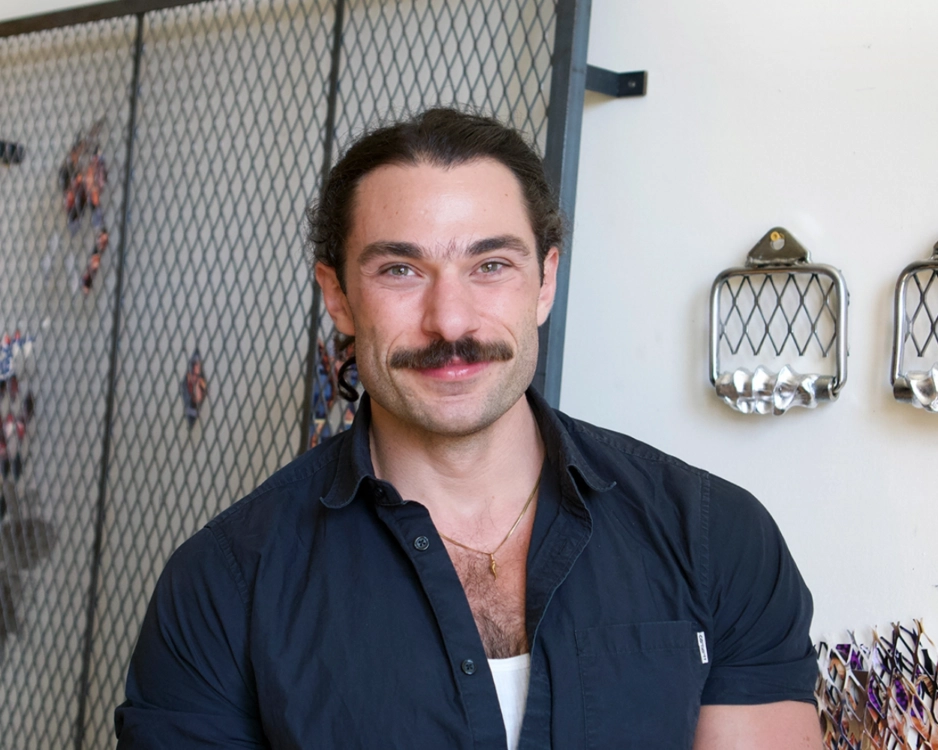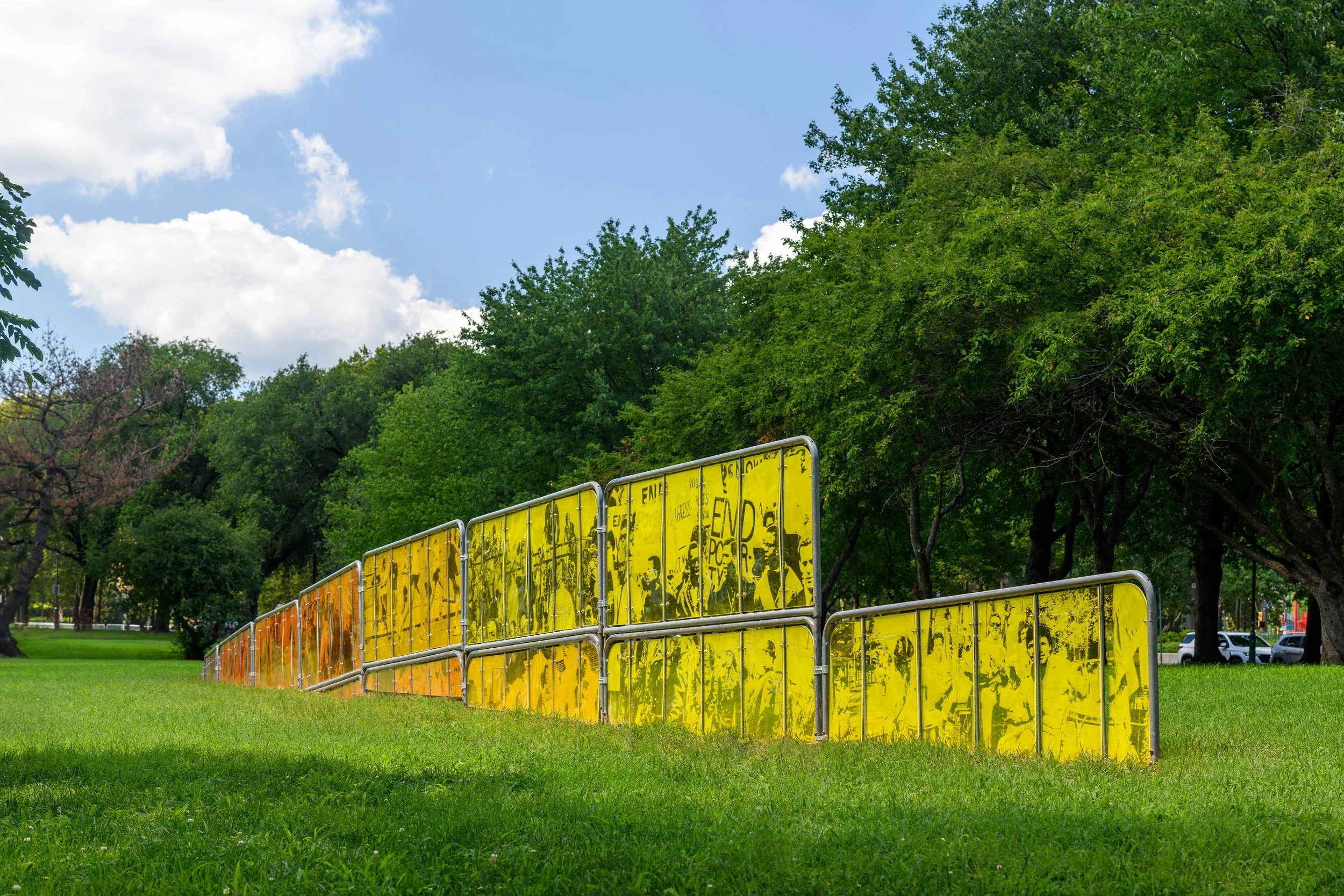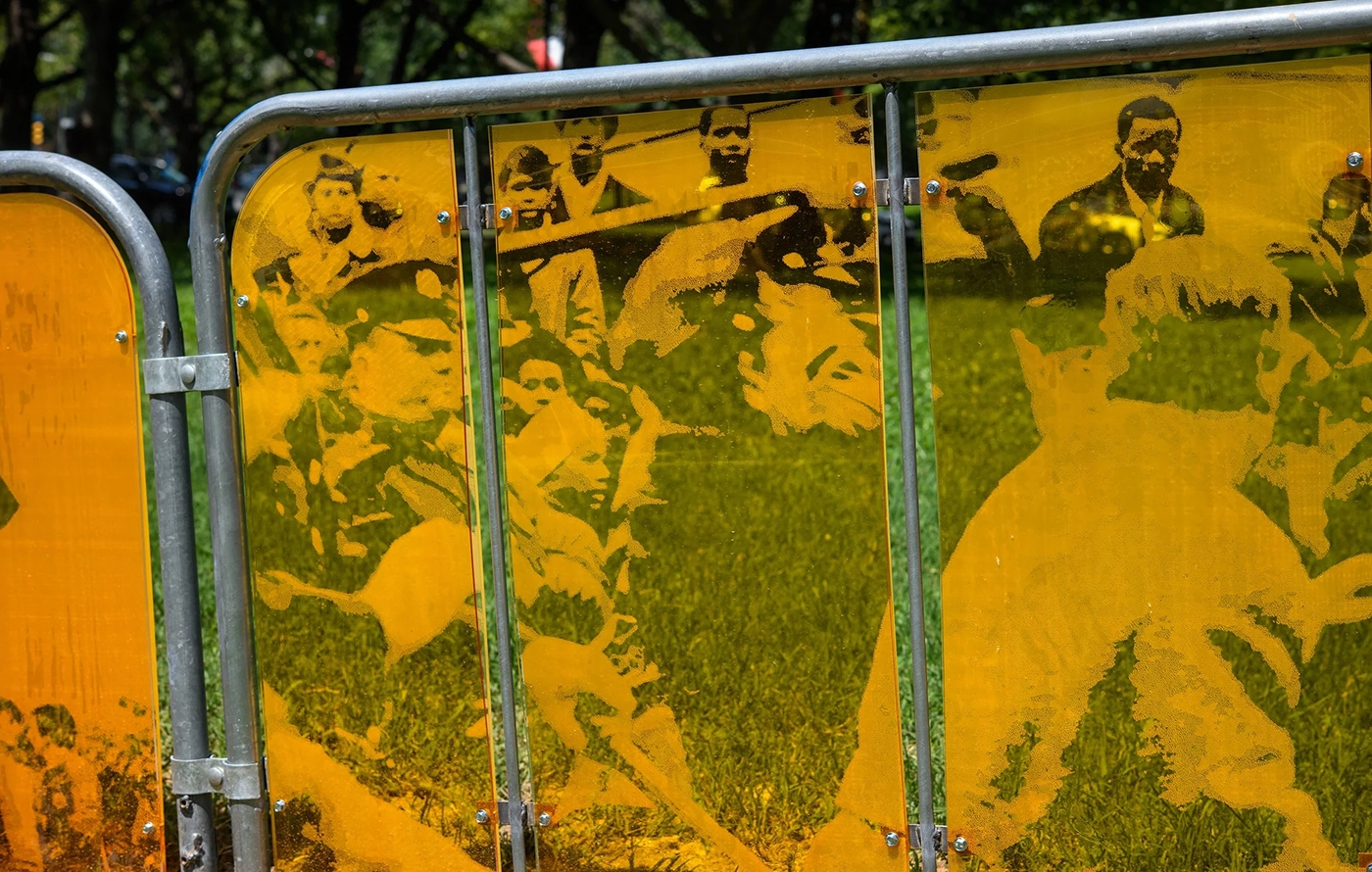Pushing limits, starting conversations, and challenging perspectives have long been ways that art can be a catalyst for change. Throughout history, artists have amplified the voices of social and political movements, transforming public spaces into platforms for discourse. Today, artists and alumni from Willamette University’s Pacific Northwest College of Art continue this tradition, creating thought-provoking pieces that bridge public art, public places, and political discourse.

Nicolo Gentile BFA’13 installed a provocative piece in Maja Park along the Benjamin Franklin Parkway as a featured artist of the Philadelphia Association for Public Art. His piece, titled Bar None, uses imagery of public gatherings from celebrations to protests displayed on barricade panels.
“Political action doesn’t always look like a megaphone. Sometimes it looks like showing up. Sometimes it looks like care, or grief, or holding space for others,” said Gentile, “Bar None doesn’t try to capture a single event; it honors the continuum. It’s not a fixed monument. It’s a living site of memory and motion — where resistance, joy, mourning, and solidarity all co-exist.”
The panels, displayed in the historic gathering place of public discourse, highlight the rich history of the space.
“By embedding those barricades horizontally and transforming them into carriers of collective memory, the work subverts their usual function,” said Gentile, “No longer tools of containment, they become conduits for reflection — reminding us that protest and celebration are not opposites, but part of the same civic spectrum. So yes, public art is political — but not because it offers easy answers. Its power lies in asking better questions.”

Gentile was deeply influenced during his time at PNCA in not only technical skill but also how to think, feel, and work like an artist. He worked with Nan Curtis, Emily Ginsburg and the late David Eckard. He appreciates how each professor brings a different approach to the table — crediting Ginsburg with nurturing conceptual clarity and critical rigor, Curtis with how to lead with empathy and intuition, and Eckard with material experimentation and performance and inquiry. These powerful mentors make up the head, heart, and body of his experience at PNCA.
“The space between their approaches is where my practice really began to take shape. The conversations I had with each of them were never siloed — they were cross-disciplinary, fluid, challenging in the best way. I think what they shared was a deep respect for art as a living, evolving language. That ethic stuck with me. I still return to their questions when I feel stuck,” recalls Gentile.
This interdisciplinary lens has served Gentile well during his career. Although based in Philadelphia, Gentile has exhibited his work internationally and works as a professor, influencing the next generation of makers, doers, and thinkers to use art to engage in the public discourse.
“I believe democratic institutions should prepare students not just to master a discipline, but to meaningfully encounter the world,” Gentile says. “That means nurturing critical thinking, ethical awareness, and creative risk-taking. Art is not decoration. It’s a way of seeing, of knowing, of resisting. It helps us metabolize what is unresolved, and imagine what’s possible.”



